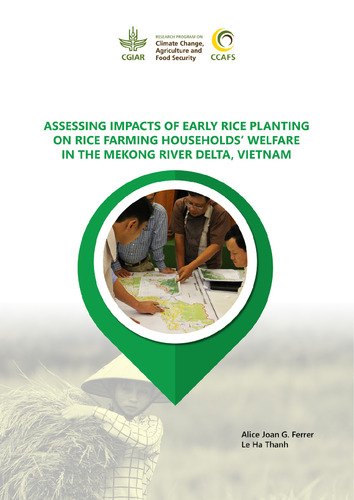Assessing Impacts of Early Rice Planting on Rice Farming Households’ Welfare in the Mekong River Delta, Vietnam
Abstract
The study was conducted to assess the impacts of adjusted crop calendar (specifically, early planting) during the Winter-Spring 2019-2020 season on the rice farming households’ welfare in the Mekong River Delta. Survey data came from 412 rice farmers who were early planters (treatment group) and 764 rice farmers who were non-early planters (control group). These rice farmers came from three provinces (5 districts and 15 communes) in Mekong River Delta: Kien Giang (1 district, 3 communes, Long An (1 district, 3 communes) and Soc Trang (3 districts, 9 communes). Data were collected in September to October 2020. Early planting happens when rice planting for the Winter-Spring 2019-2020 (W-S) season was moved on or before 15 November 2019 and it was the last cropping of the farmer. Basically, the early planters and the non-early planters differ in the number of rice cropping they practiced. Practicing double rice cropping allowed most of the early planters to adjust their cropping schedule during the year 2019-2020, identified as the latest year with worst salinity problem. The results of Propensity Score Matching show that early rice planting increased rice farming income by about VND 22.80 million to VND 24.60 million per farmer or VND 8.62 million to VND 8.77 million per hectare during the W-S season; increased annual rice farming income by about VND 13.7 million to VND 17.1 million per farmer or VND 3.2 million to VND 4.27 million per hectare; increased volume of rice production by about 5.29 to 5.67 tons/farmer or 2.51 to 2.59 tons/ha during the Winter-Spring 2019-2020 season; and increased rice production loss avoided by about 3.88 to 4.14 tons/farmer or 2.33 to 2.62 tons/ha. During salinity years, adjusting rice cropping calendar, specifically early planting as a mitigation strategy can help avert production losses and can increase rice production and income of rice farmers.

